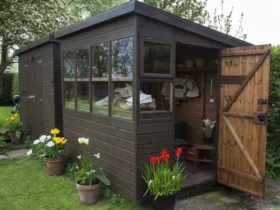Data center operators, regardless of their size or geographical location, are actively seeking ways to enhance the efficiency of their IT infrastructure, aiming to reduce costs and meet business objectives more effectively. Server consolidation, virtualization, and more efficient hardware are standard strategies.
But a more basic strategy can be a significant energy savings win – optimizing the physical layout of your data center to separate hot and cold air flows.
Optimize Your Cooling
Data center examples use much power for IT equipment and supporting infrastructure, so efficient cooling is essential. Achieving a lower PUE lowers a data center’s energy consumption and operational expenses.
One key avenue for achieving energy savings in a data center lies in optimizing the cooling system. This can be accomplished through improved airflow management, regulating chilled water flow to and from IT equipment racks. Adjusting IT equipment temperature and humidity set points and increasing the fan speed of cooling equipment can result in substantial power reductions.
Another opportunity for energy savings in a data center is to increase the return air temperature of the cooling system. This can be done using an air-side economizer, which brings in outside air when it is more relaxed than the return air to the data center. This can save energy by lowering the chiller’s supply air temperature and eliminating the need for refrigeration to cool this more relaxed air.
It’s essential to avoid over-controlling humidity, as this can waste energy by running cooling coils for unnecessary dehumidification. Additionally, tight humidity control is a carryover from older mainframe and tape storage eras and may not provide any real operational benefits.
Optimize Your Power
Balancing IT workloads across hardware components, software, and other resources is crucial for preventing performance bottlenecks and ensuring maximum efficiency in data centers. Effective IT load management involves techniques such as capacity planning, server consolidation, and workload prioritization to maximize the performance of your IT environment.
Rack servers are often significant contributors to power wastage in data centers. Addressing this issue can lead to substantial reductions in IT energy loads. These typically run at or below 20% utilization most of the time yet draw full power for this operation. However, vast improvements in processor devices and internal cooling systems have been made to minimize this wasted energy.
Uninterruptible Power Supplies (UPS) are vital backup solutions for data centers, and they can be based on batteries, rotary machines, or fuel cells. Regardless of the technology used, a small percentage of power supply energy is lost in heat due to inefficiencies in the UPS system.
Energy storage systems can be the ideal solution to bridge the gap between existing UPS systems and diesel generators in data center infrastructure, and they often work in conjunction with UPSes to extend the amount of time before a generator is needed to take over. Selecting the right energy storage solution is essential for optimizing available power in a data center, leading to significant cost savings.
You may like – How to renew AWS certification
Optimize Your Floor Space
Keeping the data center clean and debris-free is another critical step in the optimization process. Clutter, including boxes and tools, can obstruct airflow and impede coolant from reaching servers, causing overheating and operational slowdowns. Proper airflow management involves orienting racks and equipment to facilitate airflow and ease of maintenance.
Governments, both state and local, are increasingly interested in improving the sustainability of their IT facilities. Enhancing data center efficiency aligns with this goal without compromising performance or security.
One of the most effective ways to improve a data center’s energy efficiency is by installing an air conditioning system that uses variable-speed fans and adjusts its speed according to cooling requirements. Adopting efficient approaches can reduce the energy consumption of an average data center by up to 20 percent.
Accurate capacity planning is indispensable in modern data centers to ensure optimal resource allocation. This means tracking not just power and cooling capacity but also port and data cable capacity so the facility can avoid overprovisioning. Furthermore, second-generation DCIM software is frequently used in contemporary data centers to control power and guarantee that all resources are available when needed.
Optimize Your Servers
Using server optimization practices, data centers can reduce energy requirements and costs. Embracing practices such as containerization, virtualization, and storage unification is crucial for optimizing data center efficiency. Additionally, they use contemporary cooling techniques such liquid immersion cooling. This cooling system uses less energy than traditional air-cooling systems and offers almost unlimited cooling power. Additionally, these strategies contribute to sustainability by decreasing water and electronic waste and lowering overall emissions, aligning data center operations with environmentally conscious practices.
Furthermore, these containment systems can isolate specific equipment generating high heat or consuming substantial power. This targeted approach further improves cooling efficiency, contributing to overall energy savings and operational effectiveness in the data center.
Facility managers can identify inefficient or underutilized assets that can be combined to increase energy efficiency by keeping an eye on the hardware and performance of their data centers. Utilizing advanced tools such as data visualization and alerting is crucial for enhancing visibility into data center operations. These analytics provide valuable insights that help facility owners predict future resource requirements, plan for scalability, and optimize overall efficiency.






